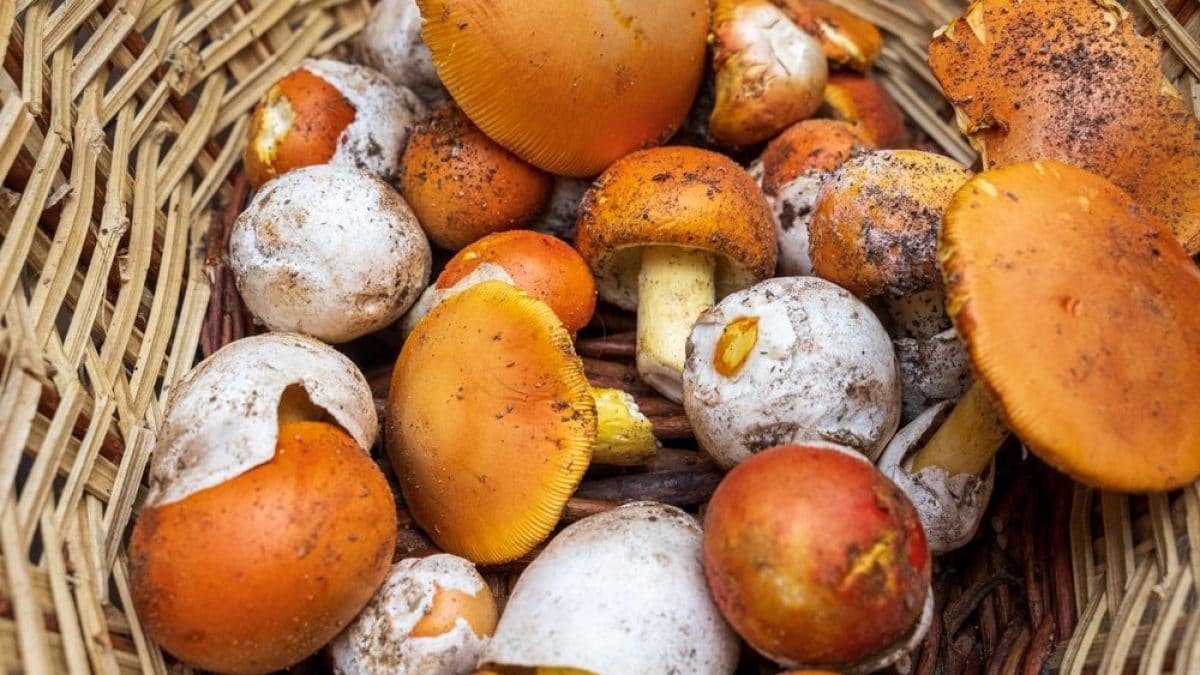
Their scientific name is Amanita caesarea and they are among the most popular edible mushrooms in the kitchen. We are talking about ovoli mushrooms, also known as ovules and royal ovoli, thanks to their sweet and tasty flavor, which makes them particularly valuable, suitable for being eaten both raw and cooked in a wide variety of recipes, from salads to risottos, including pasta dishes. Their ideal season is summer-autumn, when it is still warm: compared to other mushroom species, in fact, they dislike low temperatures and humidity, and grow in airy and sunny oak and chestnut forests, widespread throughout the Mediterranean. Let's see what their characteristics are, what to look for when harvesting them, and how to best enhance them in the kitchen.
How to Recognize Ovules
Let's start with a recommendation: if you have any doubts about a mushroom you've found or been given, don't risk it, as poisoning can be fatal. Visit a mycological inspectorate where experts will verify the edibility of your find. Certainly, knowing in advance what a mushroom looks like, whether it's a porcini or a chanterelle, can already give you some crucial information regarding its safety, but don't rely solely on information you find online.

Good ovules, for example, belong to the category of edible mushrooms and are easily recognized thanks to their bright orange convex cap, which opens when they are adults and can reach 20 cm, is smooth with striated edges: the gills are light yellow and the stem is cylindrical of the same shade, the ring is membranous, as is the volva at the base, white and thick, resembling a sack. The common name derives from the egg shape they have when young, when the caps are still closed and wrapped in a white veil that they will later shed. At both stages of growth, they can be confused with two of the most poisonous varieties: the toxic Amanita muscaria, also known as the fly agaric, which is distinguished by its vermilion and deep red color, dotted with white or yellow warts, and the Amanita phalloides (or greenish scab), which is lethal if ingested, and which resembles the young fly agaric, with a greenish and yellowish cap.
How to Clean Them
Once you've made sure you have good ovoli mushrooms, the first step before cooking them is to clean them. The advice, as with all mushrooms, is to approach them delicately, to avoid ruining a food with a fragile structure: remove any soil residue with a cloth (or brush), making sure there is none between the gills. Also remove the remains of the volva, at the base of the stem, rinse under running water and dry well. Finally, using a sharp knife, cut and remove the most fibrous parts of the stem.
Some Ideas for Using Them in The Kitchen
There's a reason why good ovoli mushrooms are called Amanita caesarea: the Latin term caesarea derives from caesar, referring to Julius Caesar, the famous Roman emperor. What does it mean? That we are dealing with delicious mushrooms, perfect for the tables of kings and sovereigns. Their flesh is pale, firm, sweetish, and gives off a subtle aroma, suitable for the most versatile preparations, whether raw or cooked.
1. Salad

Let's start with a dish that best showcases the natural characteristics of the raw material, as it is handled as little as possible. The mushrooms are sliced and left raw, to become the protagonists of a refined salad: you can opt for a bed of lamb‘s lettuce or arugula, depending on your taste, add flakes of Grana Padano or Pecorino cheese, a few walnut kernels, blueberries or apples for a pleasant acidity, and dress with a drizzle of oil, or create a simple side dish inspired by our mushroom salad, where all you need is white wine vinegar, garlic, oil and salt.
2. Pasta

Tagliatelle and pappardelle pair with ovoli to create a great classic of cuisine. Once sliced or diced, sauté the mushrooms in a pan with oil, garlic, and parsley, adding the pasta once it's cooked. You can make the dish creamy by lightly stirring in heavy cream or robiola, or enrich it by wilting a few cherry tomatoes, or make it more flavorful with diced speck.
3. Risotto

The same goes for making a delicious risotto: you can try a wide variety of combinations, always taking care not to overpower the sweet flavor of the ovules mushrooms. So, make room for a risotto with ovoli mushrooms alone or with mixed mushrooms, as well as a richer version of the saffron one.
4. Sautéed Ovules

Sautéed mushrooms are a simple side dish that's always satisfying: they can be served with roasts and scallops, but also with fried eggs, cheeses (such as melting tominos), and polenta. Simply slice them and place them in a pan with garlic and extra virgin olive oil, season with chopped fresh parsley, and cook until softened. For a more substantial alternative, you can add potatoes, browning them in the same pan, and then add the mushrooms towards the end, stirring well.
5. Omelettes and Frittatas

Sautéed mushrooms make the perfect filling for frittatas and omelettes: both are quick and easy ideas to bring to the table, even at the last minute, for lunch or dinner with friends, or even brunch.
;Resize,width=767;)
